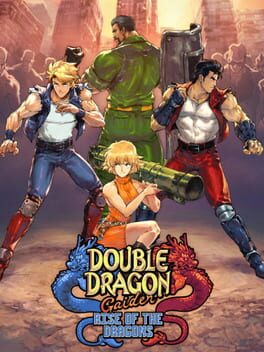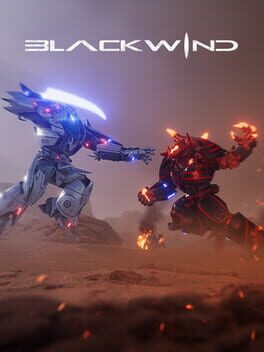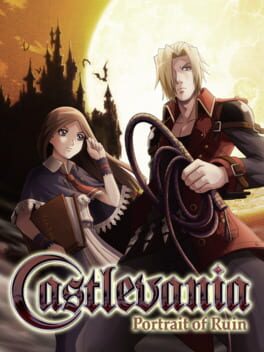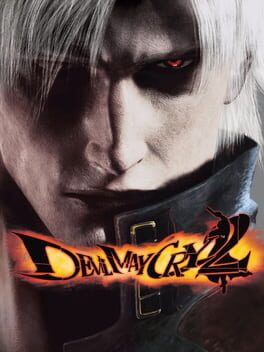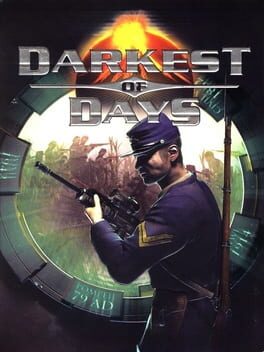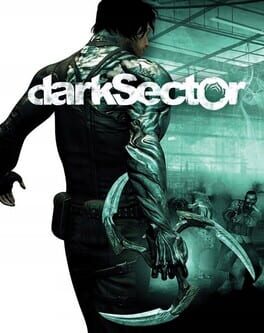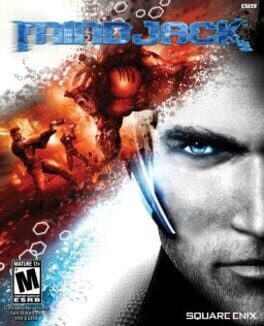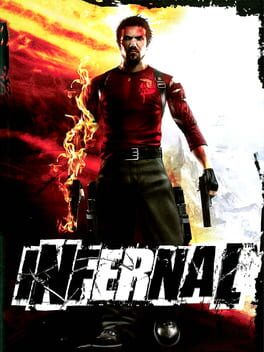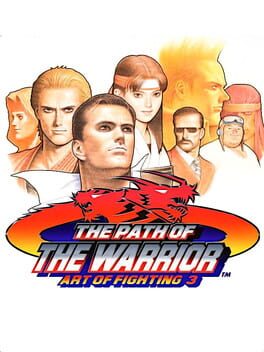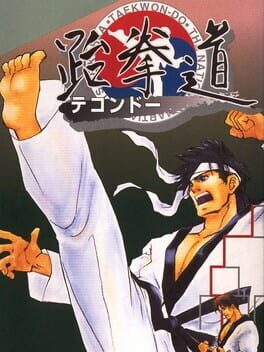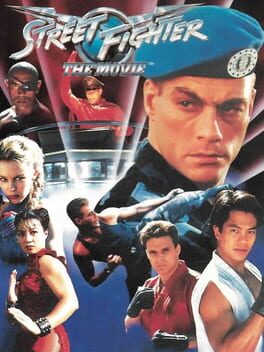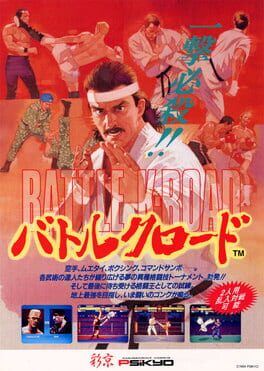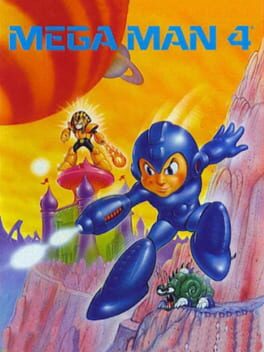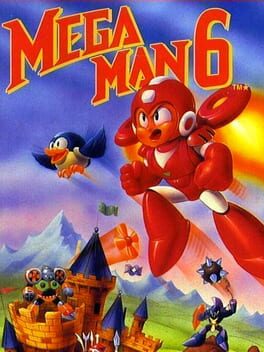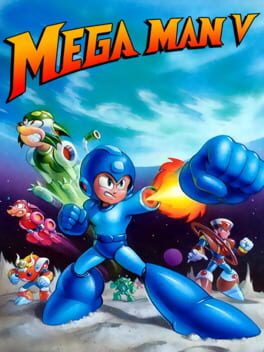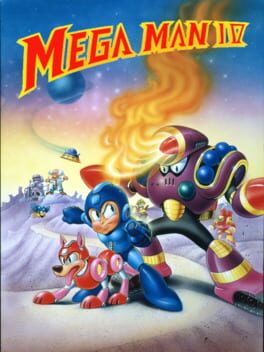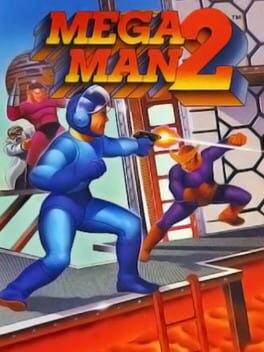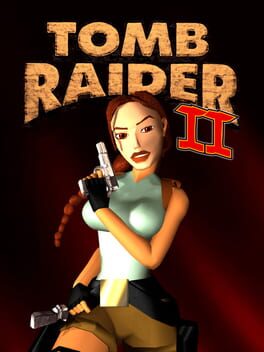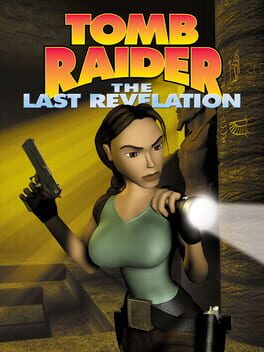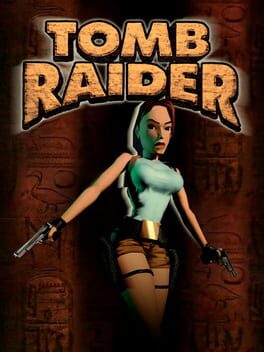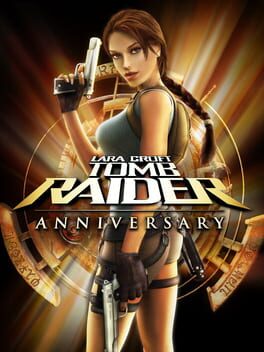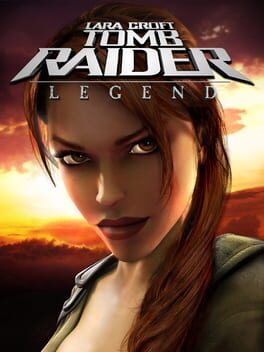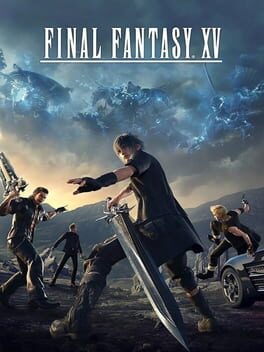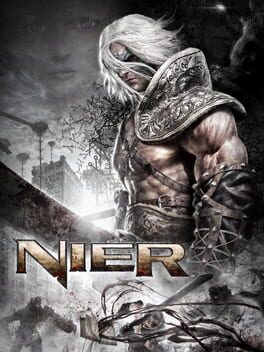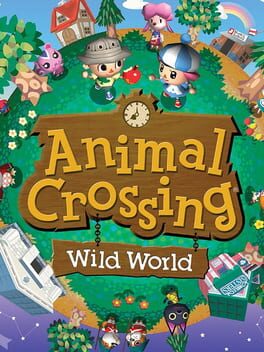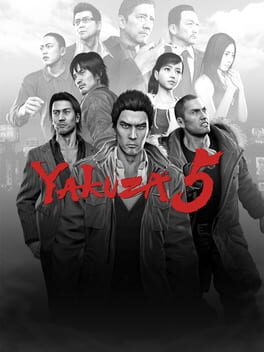MVK
179 reviews liked by MVK
The "New" was only ever entirely literal: disappointingly, that subseries was essentially a Mario highlight reel rather than anything actually new. Of course, novelty isn't tantamount to quality, but it often feels like Nintendo's only strength as a developer in the modern age is their willingness to experiment. We'll never see another first-party Nintendo game that's not painfully easy and overtutorialized, or one that pushes its mechanics and is at all willing to punish you, or even one that feels mysterious, but buy a Nintendo console and you'll still always end up with a handful of exclusives that are at least fresh conceptually. Just... without "Mario" in any of their titles. Galaxy is far from my favorite Mario game, but it's the most recent one that actually felt like something new, which is concerning considering that it released when most of this site's userbase was still in diapers. We're in the mid 2020s now and traditional, lives-and-continues-based 2D platformers are basically dead and buried, but here comes Super Mario Bros. Wonder with what seems to be a singular, concentrated effort to be new and not just New. You can turn into an elephant in this one!
Unfortunately, though, the elephant powerup is even more emblematic of the entire game than anyone could've anticipated. It looks completely unique to Mario, and, I guess, technically, it is, as he's never had an upgrade that requires him to reload his projectiles before, but does it actually change the gameplay in any meaningful capacity? No. It's just another way to break blocks and attack enemies horizontally. The whole game is preoccupied with appearing new instead of actually being new, and, I mean, it succeeded in this regard, considering I actually bought it after skipping both New Super Mario Bros. U and Bowser's Fury. Wonder flowers feel less like a central gameplay hook and more like short bonus sections that are part of already minuscule levels. The only way they were ever gonna work from a mechanical perspective was if they all happened during high-pressure situations and forced you to adapt to unpredictable twists on the fly (although that would just be a rehash of Wario Land 4) and the only way they were ever gonna work from a spectacle perspective was if they actually went all in. For every wonder section that genuinely took me by surprise- switching the point-of-view to top-down or putting me in outer space or making Mario really, really tall- there'd be five that would just turn the level into an autoscroller, or just make the enemies bigger, or just move the geometry around more than usual. Too often, it's weird in the same way that Mario Land 2 is weird: visually, and that's it. Ultimately, it's far prettier than the New Super Mario Bros. games, but it's no less bland.
And outside of the wonder sections, there really just isn’t all that much to talk about. The badge system makes Mario’s moveset loose and flexible akin to something like Yoshi’s Island, but it’s missing the level variety and mechanical experimentation that made that game work. A few stages have bonus exits, but they lack any of Super Mario World’s pseudo-puzzle solving or sense of mystery. What’s left? The fact that it has a handful of decent stage-specific mechanics? (All of the other New games do, too.) Those one-screen puzzle levels? (Didn’t care for them in Mario Maker, still don’t here.) The weird, Dark Souls-ass asynchronous co-op? (I refuse to pay for Nintendo’s online service, so I can’t comment.) How every individual world feels like its own little adventure? (Alright, I admit it, I liked this one.) If you’re not going to be new, you could at least be cohesive- I’m a big fan of both 3D World and Odyssey, but I’d hesitate to call either of them particularly revolutionary, instead focusing on being a conduit for co-op shenanigans and a modernization of Mario 64’s mechanics, respectively. Besides being bright and colorful, is there a similar underlying summary that you could apply to Wonder? More and more, it feels like Mario is becoming Kirby: not striving for anything beyond a vaguely pleasant experience and producing no bad games, but no great ones either. Maybe my standards are just too high- after all, we don't expect Star Wars or The Simpsons or Halloween to be cutting-edge anymore, even though they were at one point, so why should we Mario? But, in 2024, this franchise is unrecognizable from the one that gave us 3's level map and World's secret exits and 64's moveset. And that just saddens me more than anything else.
Unfortunately, though, the elephant powerup is even more emblematic of the entire game than anyone could've anticipated. It looks completely unique to Mario, and, I guess, technically, it is, as he's never had an upgrade that requires him to reload his projectiles before, but does it actually change the gameplay in any meaningful capacity? No. It's just another way to break blocks and attack enemies horizontally. The whole game is preoccupied with appearing new instead of actually being new, and, I mean, it succeeded in this regard, considering I actually bought it after skipping both New Super Mario Bros. U and Bowser's Fury. Wonder flowers feel less like a central gameplay hook and more like short bonus sections that are part of already minuscule levels. The only way they were ever gonna work from a mechanical perspective was if they all happened during high-pressure situations and forced you to adapt to unpredictable twists on the fly (although that would just be a rehash of Wario Land 4) and the only way they were ever gonna work from a spectacle perspective was if they actually went all in. For every wonder section that genuinely took me by surprise- switching the point-of-view to top-down or putting me in outer space or making Mario really, really tall- there'd be five that would just turn the level into an autoscroller, or just make the enemies bigger, or just move the geometry around more than usual. Too often, it's weird in the same way that Mario Land 2 is weird: visually, and that's it. Ultimately, it's far prettier than the New Super Mario Bros. games, but it's no less bland.
And outside of the wonder sections, there really just isn’t all that much to talk about. The badge system makes Mario’s moveset loose and flexible akin to something like Yoshi’s Island, but it’s missing the level variety and mechanical experimentation that made that game work. A few stages have bonus exits, but they lack any of Super Mario World’s pseudo-puzzle solving or sense of mystery. What’s left? The fact that it has a handful of decent stage-specific mechanics? (All of the other New games do, too.) Those one-screen puzzle levels? (Didn’t care for them in Mario Maker, still don’t here.) The weird, Dark Souls-ass asynchronous co-op? (I refuse to pay for Nintendo’s online service, so I can’t comment.) How every individual world feels like its own little adventure? (Alright, I admit it, I liked this one.) If you’re not going to be new, you could at least be cohesive- I’m a big fan of both 3D World and Odyssey, but I’d hesitate to call either of them particularly revolutionary, instead focusing on being a conduit for co-op shenanigans and a modernization of Mario 64’s mechanics, respectively. Besides being bright and colorful, is there a similar underlying summary that you could apply to Wonder? More and more, it feels like Mario is becoming Kirby: not striving for anything beyond a vaguely pleasant experience and producing no bad games, but no great ones either. Maybe my standards are just too high- after all, we don't expect Star Wars or The Simpsons or Halloween to be cutting-edge anymore, even though they were at one point, so why should we Mario? But, in 2024, this franchise is unrecognizable from the one that gave us 3's level map and World's secret exits and 64's moveset. And that just saddens me more than anything else.
Witchcrafty
2021
First time pirating on my vita and decided on this random game. It’s a terrible buggy mess but an easy platinum.
's fine I guess. It doesn't feel too bad to play plus all the characters you have (and unlock) are wildy different. But I ain't a fan of this Token junk at all. Gotta stretch that 100% length somehow. Enemy variety is eh... and bosses can get their asses torn apart by Marian so that's funny. Comboing can be fun but it's also one of those "one combo fits all" (as I like to call it) where you do the same one for everything.
Also not a fan of the way the in-game style looks. It's a step above reusing DD2 nes' sprites again but... I wish it were something more akin to river city girls. I think it fits the game's promo-art more than this weird bobble-headed, not-chibi style.
Honestly, I wouldn't mind this being DD4 as okay as I found this. Just a tad disappointing as far as beat em up revivals go.
Also not a fan of the way the in-game style looks. It's a step above reusing DD2 nes' sprites again but... I wish it were something more akin to river city girls. I think it fits the game's promo-art more than this weird bobble-headed, not-chibi style.
Honestly, I wouldn't mind this being DD4 as okay as I found this. Just a tad disappointing as far as beat em up revivals go.
Blackwind
2022
https://cdn.discordapp.com/attachments/711413132903579788/933451792790999090/unknown.png
https://cdn.discordapp.com/attachments/711413132903579788/933452032529023056/unknown.png
https://cdn.discordapp.com/attachments/711413132903579788/933452191014985748/unknown.png
https://cdn.discordapp.com/attachments/711413132903579788/933452429125619792/unknown.png
https://cdn.discordapp.com/attachments/711413132903579788/933452601528295534/unknown.png
https://cdn.discordapp.com/attachments/711413132903579788/933453201104068708/unknown.png
https://cdn.discordapp.com/attachments/711413132903579788/933453611336347698/unknown.png
https://cdn.discordapp.com/attachments/711413132903579788/933453643850579998/unknown.png
https://cdn.discordapp.com/attachments/711413132903579788/933454273134620802/unknown.png
https://cdn.discordapp.com/attachments/711413132903579788/933454535349919794/unknown.png
https://cdn.discordapp.com/attachments/711413132903579788/933454829207060520/unknown.png
https://cdn.discordapp.com/attachments/711413132903579788/933455104252715058/unknown.png
https://cdn.discordapp.com/attachments/711413132903579788/933455194837098516/unknown.png
https://cdn.discordapp.com/attachments/711413132903579788/933452032529023056/unknown.png
https://cdn.discordapp.com/attachments/711413132903579788/933452191014985748/unknown.png
https://cdn.discordapp.com/attachments/711413132903579788/933452429125619792/unknown.png
https://cdn.discordapp.com/attachments/711413132903579788/933452601528295534/unknown.png
https://cdn.discordapp.com/attachments/711413132903579788/933453201104068708/unknown.png
https://cdn.discordapp.com/attachments/711413132903579788/933453611336347698/unknown.png
https://cdn.discordapp.com/attachments/711413132903579788/933453643850579998/unknown.png
https://cdn.discordapp.com/attachments/711413132903579788/933454273134620802/unknown.png
https://cdn.discordapp.com/attachments/711413132903579788/933454535349919794/unknown.png
https://cdn.discordapp.com/attachments/711413132903579788/933454829207060520/unknown.png
https://cdn.discordapp.com/attachments/711413132903579788/933455104252715058/unknown.png
https://cdn.discordapp.com/attachments/711413132903579788/933455194837098516/unknown.png
mid
Devil May Cry 2
2003
The game is easier than melting ice with a volcano, but it's fun to play devil's advocate when you bring up various features later sequels expand upon. Just piss people off for fun
Combat is pretty cool with its focus being purely hand to hand. People may find it more "limiting" than normal yakuza gameplay but I think the game's way of trying to be challenging is to have the exact same skills as the enemy. I think it's pretty cool since the combat is more akin to those Wrestling/UFC fighting games. Fighting styles are pretty cool. A lot of them really feel different from each other despite sharing a few animations. Bosses are probably the best part of the game to me. For the type of combat this is, I feel the challenge is pretty fair for most of them and bosses probably felt the most imposing out all of the series from a gameplay standpoint.
This is probably just a "me" thing but the art style of the game is also my favorite of the franchise. I like the cutscene art a lot. Feels what Yakuza's 1 & 2 might look like in 2d form with its gritty look and all. Its probably what stood out to me the most and in a way why I wanted to keep playing the game without knowing a lick of japanese when I was "checking it out." So at first, it was just me wanting to look a bunch of pretty pictures. Animation is pretty much flash animation but it's stylized up the ass to really make me care.
The game overall looks pretty nice for a PSP title. I also like how diverse enemy designs look. Some of look straight out of a delinquent manga.
Story (from what little translations I managed to scrounge up) is pretty good. I imagine if you like stories like Judge Eyes/Judgement, you'll appreciate its tone and how it differs a lot from main series Yakuza despite taking place in the same city. In this era of the series, its one of the more grounded stories in my opinion. Erm... At least after a certain part of chapter 1/before/after confronting the final boss.
For cons:
Navigation can be a pain in the ass (though it's not because of controls). There's no taxis. And the cops can make getting to places kind of annoying if you end up a lot farther away from your intended location.
Enemy health can get pretty beefy especially on harder modes unless you upgrade stats. Leveling up stats is pretty weird since it's completely different from leveling up normally (experience points, etc.) Money is pretty god damn scarce.
The combat is CLEARLY not designed for multiple enemies. There's no real crowd control options in combat or at least ones that feel natural.
This is probably what can turn off fans from checking these games out, the camera is too close in combat and shakes too much whenever clean hits are made. It kind of makes the game worse than it actually is. Its not like zooming out the camera is a bad idea. Not like obstacles can obstruct the gameplay in the first place.
Side content other than substories is pretty limited. This has more to do with it being on a PSP so they probably had to make due with a smaller space than usual.
This probably depends on who you are but having the options of making cutscenes skippable AFTER beating the game is pretty pinheaded. It made redoing some sections to give the best gameplay performance I could a REAL pain in the ass.
So yeah. Interesting spin-off for the series
This is probably just a "me" thing but the art style of the game is also my favorite of the franchise. I like the cutscene art a lot. Feels what Yakuza's 1 & 2 might look like in 2d form with its gritty look and all. Its probably what stood out to me the most and in a way why I wanted to keep playing the game without knowing a lick of japanese when I was "checking it out." So at first, it was just me wanting to look a bunch of pretty pictures. Animation is pretty much flash animation but it's stylized up the ass to really make me care.
The game overall looks pretty nice for a PSP title. I also like how diverse enemy designs look. Some of look straight out of a delinquent manga.
Story (from what little translations I managed to scrounge up) is pretty good. I imagine if you like stories like Judge Eyes/Judgement, you'll appreciate its tone and how it differs a lot from main series Yakuza despite taking place in the same city. In this era of the series, its one of the more grounded stories in my opinion. Erm... At least after a certain part of chapter 1/before/after confronting the final boss.
For cons:
Navigation can be a pain in the ass (though it's not because of controls). There's no taxis. And the cops can make getting to places kind of annoying if you end up a lot farther away from your intended location.
Enemy health can get pretty beefy especially on harder modes unless you upgrade stats. Leveling up stats is pretty weird since it's completely different from leveling up normally (experience points, etc.) Money is pretty god damn scarce.
The combat is CLEARLY not designed for multiple enemies. There's no real crowd control options in combat or at least ones that feel natural.
This is probably what can turn off fans from checking these games out, the camera is too close in combat and shakes too much whenever clean hits are made. It kind of makes the game worse than it actually is. Its not like zooming out the camera is a bad idea. Not like obstacles can obstruct the gameplay in the first place.
Side content other than substories is pretty limited. This has more to do with it being on a PSP so they probably had to make due with a smaller space than usual.
This probably depends on who you are but having the options of making cutscenes skippable AFTER beating the game is pretty pinheaded. It made redoing some sections to give the best gameplay performance I could a REAL pain in the ass.
So yeah. Interesting spin-off for the series
Jagged Alliance 2
1999
Jagged Alliance 2 is a great example of a lightning-in-a-bottle situation, where a team of ambitious developers with a similar mindset of “wouldn’t it be cool if we put this in?”, wanted to make a game during the tail-end of the wild west of 90s PC gaming. They brainstormed all their best ideas together, alongside their love of different games and various media, resulting in one of the most engaging and organic feeling turn-based strategy RPGs that oozes a lot of personality and charm.
The beauty behind Jagged Alliance 2 is how straightforward the core objective is and how everything is built around it. Eliminate the tyrannical despot Queen Deidranna and liberate the nation of Arulco. How you go about completing this objective is up to you. From the beginning, you’re given a sum of cash, a laptop full of resources, intel, and websites to recruit a variety of colorful mercenaries from across the world. You can go slow and deliberate, capturing every sector in Arulco to weaken the Queen’s defenses while building up your battalion of mercs and Arulco’s rebel natives. You can also go fast and strike before the Queen even knows you’ve arrived in Arulco, carefully navigating from the north of the country to the capital in the south, blowing up the walls and somehow evading the entire army as you neutralize the Queen in her bedroom. This idea extends to everything else in the game, where quests are only marked with notes, and the solution to them is up to you.
There’s a fantastic sense of adventure and discovery, where there’s always something to find that makes each sector of Arulco a worthwhile exploration. To give an example with slight spoilers - one of my favorite questlines is meeting a mob boss who controls a city in the north side, and wants me to steal a grail for him that’s in a museum located farther south in the country. I already secured the city that has the museum, so it was just a matter of me getting someone sneaky and stealing the grail. I took him back to the mob boss, gave him the grail, and accepted a hefty sum of cash to help me out further into my journey of liberating Arulco. Hours later I secured a village and talked to one of the locals, who maintains a culturally significant ancient site nearby. He tells me they’ve been missing a grail that had been an important part of the land’s ancestral history. I felt bad that I had already given the grail to the mob boss, but I didn’t want to reload a save as I'd already made hours of progress since then. So, I went ahead and went back to the mob boss, assuming there was a way to talk to him again about the grail. He spat me the same lines after I gave him the grail, which is to enjoy the money and spend it in his city’s establishments. The whole city was surrounded by his goons, so it’s going to be a tough fight. But I went ahead and positioned my squad to advantageous points and fought them all. To my surprise, the grail was still in the mob boss’ corpse. I picked it up, gave it back to the village guy, and gained a positive reputation with the people of Arulco. As a bonus for my trouble, I even found a secret stash in the mob boss’ mansion leading underground into an abandoned mine and gained even more cash. The game is full of neat organically designed quests like this, and again the idea of leaving you to your own devices on how you resolve them.
The combat is straightforward, solid, and feels very lethal. Instead of showing the chance to hit and damage of your attacks like in most turn-based combat games, JA2 only suggests you the optimal range of your weapon. This results in less number crunching and min-maxing the situation, and encourages the player to take risks and go with their gut feeling. You can use action points to aim your weapon increasing the likelihood of hitting your shot. Do you take the risk of a farther headshot to dispatch a dangerous armored enemy ASAP? Or do you go for the safer option, where you move a bit closer, shoot unaimed toward his torso, and hope it’ll slow him down so you can assess your options in the next turn?
Going further into the lethality of combat, even a leg shot can incapacitate someone, making armor and first-aid very important. Just getting someone to bleed and not have medical assistance within the next turn can put them out of commission easily. Not to mention burst and full auto fire have separately calculated hits, making even just a single stray bullet hit dangerous, with a full hit practically a guaranteed kill. I love how the number crunching overall feels very natural. Stats and numbers give you an idea of the capabilities of mercs and weapons but are designed to keep things grounded and consistent where a bullet is a bullet, a knife’s a knife, and point-blank range even with the worst shot in the world can explode someone’s head with a shotgun. Not to mention explosives, which there are a variety of as well, coupled with destructible environments. It’s all very exciting, chaotic and fun.
Then we have the strategic layer of the game wrapping all of the other elements together. Logistics and budget management are all critical, alongside making sure your band of mercs doesn’t kill each other. You aren’t just going to have to consider the abilities of your mercs, you also need to learn their personalities, history, disabilities, prejudices, and so-and-so. Having a couple of exes for example that had a bitter break up might kill each other when you have them in the same sector, and it isn’t exactly great for morale if you pair up the racist in a squad of racially diverse people. On the flip side, you’ll also have long-time friends or potential friends build up their bonds and become an even stronger synergy beyond whatever their stats are. It’s all wonderfully designed, and you’ll be spending equal time in combat as you with the strategic management, as you make sure your weapons are repaired, mercs patched up, and well rested while making sure the Queen’s army doesn’t take back the sectors you have liberated.
All of this is presented in a campy pastiche of 80s and 90s action movies that’s a lot of fun, while also managing to keep serious moments grounded, including the potential deaths of your mercs and other characters. It’s all fantastic and strikes a nice balance between tonal shifts.
I already liked JA2 back when I first played it around the mid-2000s, but recently replaying it and giving it a more in-depth playthrough alongside the experience of playing more games throughout the years gave me a newfound appreciation of how wonderful this game is. My motivation to replay throughout the series started after finding out JA3 was released, and I even ended up delaying playing that because as soon as I finished JA2 again, I went straight for a replay onto the hardest difficulty level. JA2 shot up immediately as one of my all-time favorites in general.
If any of this piqued your interest, you may have come across the common suggestion of playing with the 1.13 mod. I highly recommend not doing this on your first playthrough. 1.13 itself is an amazing project, but it overhauls the game a whole lot, being a labor of love that was worked on since 2005 and is still being worked on to this day. But even when you read through the new features and settings and make it as close to the vanilla game as possible, it’s still very different and is just overwhelming overall to get through when you don’t have a first-time experience of the game. I instead suggest playing it vanilla using the JA2 Stracciatella source port which makes it run nicer on modern systems alongside some bug fixes.
The beauty behind Jagged Alliance 2 is how straightforward the core objective is and how everything is built around it. Eliminate the tyrannical despot Queen Deidranna and liberate the nation of Arulco. How you go about completing this objective is up to you. From the beginning, you’re given a sum of cash, a laptop full of resources, intel, and websites to recruit a variety of colorful mercenaries from across the world. You can go slow and deliberate, capturing every sector in Arulco to weaken the Queen’s defenses while building up your battalion of mercs and Arulco’s rebel natives. You can also go fast and strike before the Queen even knows you’ve arrived in Arulco, carefully navigating from the north of the country to the capital in the south, blowing up the walls and somehow evading the entire army as you neutralize the Queen in her bedroom. This idea extends to everything else in the game, where quests are only marked with notes, and the solution to them is up to you.
There’s a fantastic sense of adventure and discovery, where there’s always something to find that makes each sector of Arulco a worthwhile exploration. To give an example with slight spoilers - one of my favorite questlines is meeting a mob boss who controls a city in the north side, and wants me to steal a grail for him that’s in a museum located farther south in the country. I already secured the city that has the museum, so it was just a matter of me getting someone sneaky and stealing the grail. I took him back to the mob boss, gave him the grail, and accepted a hefty sum of cash to help me out further into my journey of liberating Arulco. Hours later I secured a village and talked to one of the locals, who maintains a culturally significant ancient site nearby. He tells me they’ve been missing a grail that had been an important part of the land’s ancestral history. I felt bad that I had already given the grail to the mob boss, but I didn’t want to reload a save as I'd already made hours of progress since then. So, I went ahead and went back to the mob boss, assuming there was a way to talk to him again about the grail. He spat me the same lines after I gave him the grail, which is to enjoy the money and spend it in his city’s establishments. The whole city was surrounded by his goons, so it’s going to be a tough fight. But I went ahead and positioned my squad to advantageous points and fought them all. To my surprise, the grail was still in the mob boss’ corpse. I picked it up, gave it back to the village guy, and gained a positive reputation with the people of Arulco. As a bonus for my trouble, I even found a secret stash in the mob boss’ mansion leading underground into an abandoned mine and gained even more cash. The game is full of neat organically designed quests like this, and again the idea of leaving you to your own devices on how you resolve them.
The combat is straightforward, solid, and feels very lethal. Instead of showing the chance to hit and damage of your attacks like in most turn-based combat games, JA2 only suggests you the optimal range of your weapon. This results in less number crunching and min-maxing the situation, and encourages the player to take risks and go with their gut feeling. You can use action points to aim your weapon increasing the likelihood of hitting your shot. Do you take the risk of a farther headshot to dispatch a dangerous armored enemy ASAP? Or do you go for the safer option, where you move a bit closer, shoot unaimed toward his torso, and hope it’ll slow him down so you can assess your options in the next turn?
Going further into the lethality of combat, even a leg shot can incapacitate someone, making armor and first-aid very important. Just getting someone to bleed and not have medical assistance within the next turn can put them out of commission easily. Not to mention burst and full auto fire have separately calculated hits, making even just a single stray bullet hit dangerous, with a full hit practically a guaranteed kill. I love how the number crunching overall feels very natural. Stats and numbers give you an idea of the capabilities of mercs and weapons but are designed to keep things grounded and consistent where a bullet is a bullet, a knife’s a knife, and point-blank range even with the worst shot in the world can explode someone’s head with a shotgun. Not to mention explosives, which there are a variety of as well, coupled with destructible environments. It’s all very exciting, chaotic and fun.
Then we have the strategic layer of the game wrapping all of the other elements together. Logistics and budget management are all critical, alongside making sure your band of mercs doesn’t kill each other. You aren’t just going to have to consider the abilities of your mercs, you also need to learn their personalities, history, disabilities, prejudices, and so-and-so. Having a couple of exes for example that had a bitter break up might kill each other when you have them in the same sector, and it isn’t exactly great for morale if you pair up the racist in a squad of racially diverse people. On the flip side, you’ll also have long-time friends or potential friends build up their bonds and become an even stronger synergy beyond whatever their stats are. It’s all wonderfully designed, and you’ll be spending equal time in combat as you with the strategic management, as you make sure your weapons are repaired, mercs patched up, and well rested while making sure the Queen’s army doesn’t take back the sectors you have liberated.
All of this is presented in a campy pastiche of 80s and 90s action movies that’s a lot of fun, while also managing to keep serious moments grounded, including the potential deaths of your mercs and other characters. It’s all fantastic and strikes a nice balance between tonal shifts.
I already liked JA2 back when I first played it around the mid-2000s, but recently replaying it and giving it a more in-depth playthrough alongside the experience of playing more games throughout the years gave me a newfound appreciation of how wonderful this game is. My motivation to replay throughout the series started after finding out JA3 was released, and I even ended up delaying playing that because as soon as I finished JA2 again, I went straight for a replay onto the hardest difficulty level. JA2 shot up immediately as one of my all-time favorites in general.
If any of this piqued your interest, you may have come across the common suggestion of playing with the 1.13 mod. I highly recommend not doing this on your first playthrough. 1.13 itself is an amazing project, but it overhauls the game a whole lot, being a labor of love that was worked on since 2005 and is still being worked on to this day. But even when you read through the new features and settings and make it as close to the vanilla game as possible, it’s still very different and is just overwhelming overall to get through when you don’t have a first-time experience of the game. I instead suggest playing it vanilla using the JA2 Stracciatella source port which makes it run nicer on modern systems alongside some bug fixes.
Touhou Luna Nights
2019
Mechanically excellent but would've vastly benefitted from being a traditional platformer rather than a Metroidvania. Areas never connect to each other in any interesting or meaningful ways and half the upgrades are literal keys to locked doors (this happens five times and that's not even counting the upgrades that aren't keys but may as well be like the screw knives and the ice magatama), greatly diluting the exploration--the hidden upgrades help, but they only do so much.
The time stopping is fantastic and the game's existence is worth it for that alone, it's an idea that never gets old and the way it interacts with all the other systems is genius. It's put to many creative uses, but this is further reasoning for why I don't think the Metroidvania structure benefits it much. If the level design had been more focused I think even more mileage could've been squeezed out of this system since it could've justified more complex challenges in every room as you wouldn't be needing to backtrack through them multiple times. Both Guacamelee titles come to mind as games that are kind of open but regularly funnel you through linear gauntlets of platforming challenges that push your moveset to its absolute limit in an incredibly satisfying way that I think could've worked great for Luna Nights too.
In its current state it's difficult for me to not feel that Luna Nights has some major missed potential, but that shouldn't take away from the fact that the rest of it is still solid and contains a lot of clever systems that connect to each other in engaging ways. It's worth a playthrough, but it makes me sad thinking about what it could've been and how close Team Ladybug was to creating a masterpiece.
also the extra stage kind of sucks
The time stopping is fantastic and the game's existence is worth it for that alone, it's an idea that never gets old and the way it interacts with all the other systems is genius. It's put to many creative uses, but this is further reasoning for why I don't think the Metroidvania structure benefits it much. If the level design had been more focused I think even more mileage could've been squeezed out of this system since it could've justified more complex challenges in every room as you wouldn't be needing to backtrack through them multiple times. Both Guacamelee titles come to mind as games that are kind of open but regularly funnel you through linear gauntlets of platforming challenges that push your moveset to its absolute limit in an incredibly satisfying way that I think could've worked great for Luna Nights too.
In its current state it's difficult for me to not feel that Luna Nights has some major missed potential, but that shouldn't take away from the fact that the rest of it is still solid and contains a lot of clever systems that connect to each other in engaging ways. It's worth a playthrough, but it makes me sad thinking about what it could've been and how close Team Ladybug was to creating a masterpiece.
also the extra stage kind of sucks
No Straight Roads
2020
Amazing visual design and good music but unfortunately has unbearable boring combat, a sort of music based (but not really) brawling gameplay that doesn't resonate with what it tries to do, the over abundance of questionable tier dialogue also brings its cutscenes down, the hub world is completely dead/empty and lastly the protagonists are lacking in charm despite their well done design, they just don't feel that likeable as they are probably supposed to be.
FYI I also played the Encore Edition hoping that the game would have some of its gameplay mechanics remade/rebalanced, but literally nothing changed.
FYI I also played the Encore Edition hoping that the game would have some of its gameplay mechanics remade/rebalanced, but literally nothing changed.
7 lists liked by MVK
by goznog |
58 Games
by PKMudkipz |
0 Games
by JabroniAbuser677 |
45 Games
by lopix |
10 Games
by cobra86692 |
12 Games
by mits |
55 Games
by Kakao |
21 Games


